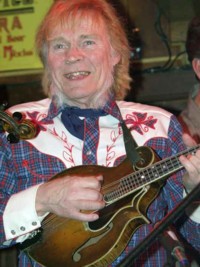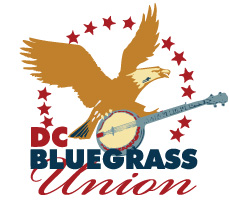Frank Wakefield
 Franklin Delano Roosevelt Wakefield was born on June 26, 1934 at Emory Gap, near Harriman, Roane County, Tennessee, the 10th child (of 12) and oldest son of Simpson (“Sim”) and Birdie Wakefield. He led a very impoverished childhood that required him to quit school after the second grade so he could help his family make ends meet on a hardscrabble Depression-era farm.
Franklin Delano Roosevelt Wakefield was born on June 26, 1934 at Emory Gap, near Harriman, Roane County, Tennessee, the 10th child (of 12) and oldest son of Simpson (“Sim”) and Birdie Wakefield. He led a very impoverished childhood that required him to quit school after the second grade so he could help his family make ends meet on a hardscrabble Depression-era farm.
Inspired by Grand Old Opry star DeFord Bailey, Frank took up the harmonica at a very young age, but soon became frustrated. As Birdie and several of Frank’s older sisters sang and played guitar, young Frank decided to follow suit, and by age 8 he was a very good guitarist and could also play the bass. At age 13, Frank’s pop, Sim Wakefield, was found frozen to death in the railyard at Harriman, where he also worked as a brakeman, and the Wakefield family was soon in very dire straits. Several of Frank’s sisters moved north to Dayton Ohio, while Frank and his little brother Ralph went in an out of orphanages in Roane County over the next 2 years. At age 15 Frank finally ran away to Dayton to join his older sisters. Otis Shearer, his brother-in-law, traded him an old round back parlor mandolin and gave him a few lessons.
Frank threw himself into the mandolin full time until he could play everything he heard his heroes (Bill Monroe, Jesse McReynolds and the Blue Sky Boys) perform on the Opry.
With brother Ralph on Guitar, and billing themselves as The Wakefield Brothers, Frank made his professional debut at age 16 playing house parties and on radio station WHIO, Middletown, Ohio. While sitting on his front porch one day in 1952, Frank was approached by a very young Red Allen who, fresh out of the U.S. Marine Corps, was looking for musicians to start a country band. Joining them was legendary Dayton banjo player Noah Crase. Billing themselves as “Red Allen and the Blue Ridge Mountain Boys,” the trio started playing the rough blue collar bars on Dayton’s 5th Street as well as similar venues in central Ohio and on up into Michigan. The work was not steady and for a brief period young Frank hooked up with a Pentecostal Preacher’s traveling tent show, backing the services on guitar and mandolin. It was in this situation and under these circumstances that the uneducated and impressionable Frank acquired religion as well as a treasury of rural gospel songs. When that ended (reportedly after a dead man in a coffin stunt backfired, panicking the audience and spooking Frank) he returned to the Dayton grind, playing with everyone in town, including Red, Dempsey Harvey, Sid Campbell and 2 other southern transplants named Bob and Sonny Osborne.
Red joined up with the Osbornes in 1954, leaving Frank without means. He soon linked up with Jerry Sullivan and Red Stanley and the three of them made a barnstorm trip through the deep south, winding up with a show on a Mississippi radio station. After they had “played out” in Mississippi, Frank again returned to Dayton and freelanced the beer joints and occasionally played more respectable dates with Carter and Ralph Stanley. In 1955, Frank moved up to Detroit and soon formed a band with Marvin Cobb called The Chain Mountain Boys. It was with this group and later with a band led by Buster Turner, that Frank cut his first 45 rpm records on the Wayside label, including a song he had written back in 1953 called “New Camptown Races.” The other 3 titles released in 1957 by Wayside were “Your’e The One (I See In My Dreams),” “Leave Well Enough Alone,” and “Tell Me Why (My Daddy Don’t Come Home).” These records were soon collectors items, especially “New Camptown Races,” which was played in overdrive in the then-unheard of key of B flat.
In 1958, Jimmy Martin heard Frank in Detroit and offered him a job. Frank toured as a Sunny Mountain Boy for six months (along with a young J.D. Crowe) and while Wakefield had the same experience with Jimmy’s legendary temper as everyone else, Frank always steadfastly maintained that Jimmy Martin was the all-time best bluegrass vocalist. The tour with Jimmy Martin brought the band to Baltimore and it was there that Frank made the acquaintance of a local Dobro player, Kenny Haddock. After hearing Wakefield play, Haddock enthusiastically encouraged Frank to come East, where there was more work and better money.
Following the tour Frank returned to Dayton and at this time the Osbornes had also let Red Allen go. Red & Frank teamed up once more, this time calling the band “The Kentuckians.” With Red Spurlock, Allen and Wakefield cut a couple of sides on the BMC label as “The Red Heads,” but the records were poorly distributed. Faced with continuing poverty, and with Red Allen distracted by an ugly divorce proceeding, Frank remembered Kenny Haddock’s words from the previous year and decided to heed them. He bundled his wife and four children into his station wagon and headed to Baltimore. There he and his family stayed at Haddock’s residence, and Frank was soon picking with Kenny and ex-Blue Grass Boy Lamar Grier in a band called The Franklin County Boys. Frank also freelanced the region, making good connections with– among others– the Stoneman Family.
In 1960, Red Allen joined Frank in the area and they quickly reformed the Kentuckians and began to work clubs in the Baltimore-DC area. Pete (Kuykendall) Roberts– one of those aficionados who had snatched up Frank’s 1957 45 rpm of “New Camptown Races” came into the band to play banjo, and ex-Buzz Busby guitarist, ex-Country Gentleman bassist Tom Morgan joined on guitar. Red often added a fiddle to the band– usually Billy Baker, but sometimes Scotty Stoneman, when they could get him. By 1961, the band not only had landed a regular Sunday afternoon air-shot over WDON in Wheaton, MD, but had been invited to play both Carnegie Hall and Gerdie’s Folk City in New York.
Shortly thereafter the band made a trip to Columbus Ohio, where Frank acquired his priceless 1923 Lloyd-Loar mandolin for a mere $150. On July 4th 1961, the Kentuckians were featured performers at Bill Clifton’s first-ever 1 day outdoor bluegrass “festival” at Oak Leaf Park in Luray, Virginia. Backstage that day, a famous encounter between a young Wakefield and Bill Monroe occurred. Frank and Bill picked away furiously for awhile, before Monroe reportedly said to him, “Well, you can pick as good as me– or nearly as good– so now you’ve got to go out and get your own sound.”
In mid-1961, the great Ohio banjo player Ralph “Robbie” Robinson joined the band and remained until his privately piloted plane crashed in the Blue Ridge mountains on a trip back to Ohio. The legendary banjo genius Bill Keith replaced Robinson as the Kentuckians’ banjo man until he was snatched away by Monroe. Frank remained very busy with the band throughout ’63 and into ’64 and also worked a day job as an auto-glass installer for the Banner Glass Company and later as an air conditioning technician at the Pentagon in order to feed his family. It was also at this time that Frank began night-school and it was a proud moment for him when he at last learned to read and write and sign his name. He was 28 years old. Both Red & Frank also did some freelancing at this time, including playing– uncredited– on 2 popular Bill Emerson banjo albums.
In 1964, David Grisman, a mandolin devotee who had been driving to DC from New York for 2 years to take lessons from Frank, convinced Folkways Records to record the band. The sessions were done in both New York and Arlington, resulting in the now-famous Folkways LP album release, “Red Allen, Frank Wakefield & The Kentuckians” (re-released by Smithsonian-Folkways Records a few years ago as a special 2 CD-set). Despite the growing recognition, things were not going well between Red and Frank. Tensions had been building for years. It was obvious in watching their on-stage shows at this time that Red’s comments were increasingly crossing the line of comedy and subjecting Frank to pointed ridicule and embarrassment. The act called for Red to play the straight man while Frank played the uneducated hill billy. Most of the time it worked, but on those occasions when Red had been drinking– which was not infrequently– the act would devolve into a string of pointed and personal insults directed at Frank– whom Red always treated in a condescending manner at any rate, even when sober.
In 1965, when Ralph Rinzler left The Greenbriar Boys to become Bill Monroe’s manager, Frank was offered the job, and the split with Red Allen became final. Except for a couple of chance encounters, the two never shared a stage again. Frank remained with his family in Hyattsville Maryland for the first year of his Greenbriar Boys employment, commuting back and forth to New York. Early one morning after an all-night drive back from New York, Frank fell asleep at the wheel just a few blocks away from his Hyattsville MD home and hit a telephone pole. Frank was in a coma for the next six months. While Red Allen could not find it within himself to shed his hard-shell exterior long enough to make up publicly with his longtime partner, upon hearing of the accident, he rushed to the scene, made sure to rescue Frank’s priceless mandolin from the wrecked car, and looked in on Frank during the long period of recovery. Frank lost both his hearing and his speech in the accident, and his future as a performer was in doubt. But he did recover– miraculously– and by 1967 he had left the Washington area for good to make upstate New York his home base. And this was only the beginning of a long career that has taken him from Watermelon Park to Tokyo, London and Sydney, to the IBMA and the Grammy Awards– still the favorite mandolinist of thousands of music lovers across the globe.
